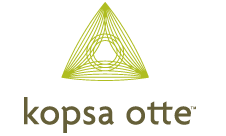Last week I posted a summary of the Tanning Tax. Here is an update. On Friday, June 11, 2010 the IRS issued final, temporary and proposed regulations to provide guidance on the new 10% indoor tanning services excise tax. The summary that I posted follows the new law but I thought you might be interested in the recent announcement from the IRS. I have highlighted some of the new rules.
The Patient Protection and Affordable Care Act (PL 111-148) created a new 10% excise tax on amounts paid for indoor tanning services after June 30, 2010. Like a sales tax, the excise tax will be collected from the person tanning when payment for the tanning services is made.
The regulations provide that “amount paid” includes all amounts paid to a tanning services provider for indoor tanning services, including any amount paid by insurance. However, because many tanning salons sell other goods and services in addition to tanning services, the regulations provide rules for determining the tax when the provider charges for various goods and services in addition to the tanning services. Tanning providers avoid collecting tax on other goods and services if the charges are separable, do not exceed the fair market value of the other goods and services, and are shown in exact amounts in the records pertaining to the indoor tanning services charge. If the charges are not separately stated and the total amount paid includes indoor tanning services, the tax will be based on the portion of the amount paid that can be reasonably attributed to the tanning services.
Liability for the tax arises at the time payment is made for the services, but in some cases (such as when a gift card is purchased), it may not be possible at the time of purchase to determine if the payment is for tanning services. The regulations provide that in that case, payment is treated as being made (and liability for the tax arises) at the time it can be reasonably determined that the payment is made specifically for indoor tanning services (for example, when the gift card is redeemed to pay specifically for indoor tanning services).
The regulations clarify that the person who pays for the tanning services is liable for the tax, even though the tanning services may actually be performed on someone else (for example, where the payor buys a tanning gift certificate for someone else).
The regulations carve out an exception for “qualified physical fitness facilities” that include access to indoor tanning facilities as part of a membership fee. The IRS has determined that where such access is incidental to a physical fitness facility’s predominant business, the amount attributable to the indoor tanning access would be difficult to determine. Thus, amounts paid to qualified physical fitness facilities in that situation will not be subject to the 10% tax. However, the regulations narrowly define "qualified physical fitness facility" to exclude businesses that predominantly engage in indoor tanning or other cosmetic services.
The definition of indoor tanning service does not include phototherapy services provided by a licensed medical professional. The regulations define “phototherapy service” and specify that the service must be performed by and on the premises of a licensed medical professional in order to qualify for the exemption from the tax.
Collection and Payment Procedures
Providers of tanning services must collect the tax and pay it over quarterly to the government. In cases where the tax is not separately stated, the amount paid is presumed to include the tax. If the payor does not pay the tax, the service provider must pay the tax.
The tax is reported by the tanning services provider on Form 720, Quarterly Federal Excise Tax Return. Full payment of the tax is due when the quarterly Form 720 is timely filed; the regulations do not require semimonthly tax deposits.
The temporary regulations will be effective upon publication in the Federal Register.


